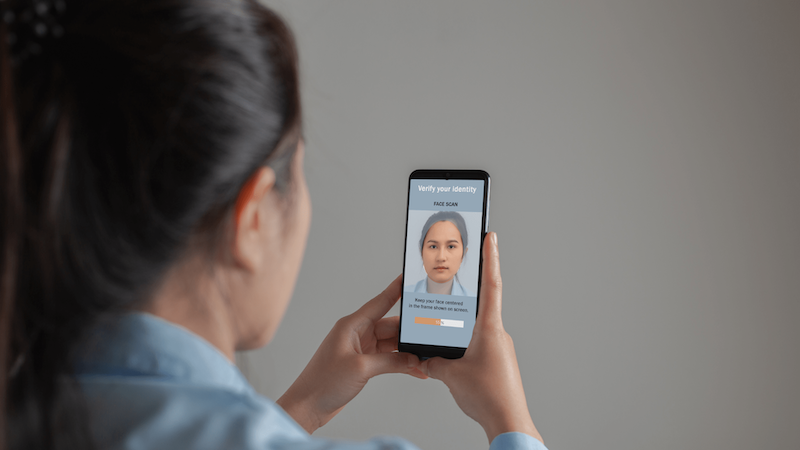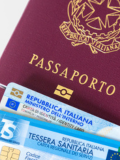KYC documents explained for companies
As a company, you are obliged to request certain documents from your customers to verify their identity. This is part of the KYC (Know Your Customer) regulations that businesses must follow. The KYC regulations are designed to help companies prevent money laundering and other financial crimes.
By collecting and verifying customer data, businesses can ensure that they are not unwittingly facilitating criminal activity. In this article, we answer the most important questions about KYC documents and how to check them properly.
KYC-DOCUMENT What is a KYC document?
A KYC document is a document that proves the identity and address of a customer. It is generally used by financial institutions to verify the identity of their customers or clients and to prevent money laundering.
The presentation of KYC documents and their verification is part of the anti-money laundering framework that banks and financial institutions are legally obliged to comply with.

- Proof of Identity (POI document)
- Proof of address (POA document)
It is important to note that the same document cannot be used to confirm both the identity of the customer (POI) and their place of residence (POA). Therefore, at least two documents are required for the KYC process.
The KYC documents that are considered acceptable depend on the jurisdiction in which the KYC process is conducted. Some of the generally accepted documents are listed below.

Proof of identity (POI document)
A proof of identity (POI) is a document that must contain a photo and confirm the name and date of birth. It can also contain other information such as address, gender and signature. Some examples of POI from around the world are:
- Passports - universally recognized
- National Identification Cards - Aadhaar in India, DNI in Argentina, SIN/SSN in Canada/United States, HKID in Hong Kong, BSN in the Netherlands
- Driver's license - United States, Canada, the Netherlands
- Voter ID card - INE (Instituto Nacional Electoral) in Mexico, India, Jamaica
- Health card - Canada
Any company that verifies proof of identity (POI) should have a KYC guide that describes the process and requirements for the user.
.png?width=800&height=533&name=Phone_Hands_Typing%20(1).png)
Proof of Address (POA) - Document
A proof of address (POA) is a document that proves the address of a person or company. This can be a utility bill, bank statement, rental agreement or other official document that contains the name and address of the person or business.
Most documents should usually be no more than three months old to show that the address is current. Some examples of POAs from around the world are:
- Utility bills such as landline telephone bills, gas bills or electricity bills
- Bank account statements or passbook entries
- Proof of residence issued by a notary or government authority
- Identity card or a document with an address issued by a central or state government
- Maintenance invoices from official companies
KYC-DOCUMENT PROOFING How PXL Vision checks POI
The PXL Vision software works with the user's smartphone camera to scan and extract information from the ID document. This information is then used to automatically determine the authenticity of the ID card.
All the customer has to do is point their camera at the ID document and follow the instructions on the screen. Our technology recognizes the ID card and reads the relevant information from the document.
Most ID documents have one or more machine-readable lines of code (MRZ). We extract the information and perform various tests on the MRZ itself. Further information is then extracted from the rest of the document, the so-called visual inspection (VIZ).

However, it is not enough just to extract information from the document, we also want to ensure that it is a genuine identity document and not a forgery. To assess the authenticity of an identity document, we analyse hundreds of different visual features and carry out a series of security checks.
More and more ID documents are now equipped with a biometric NFC chip. Using the NFC reading functions of the smartphone (if available), we can also read the information from the document and check whether the chip in the document has been tampered with. This technology offers the highest level of security for document verification.
If the automated checks fail, there are manual measures to check the identity documents. This is done on the basis of our customers' security requirements or applicable regulations. PXL Vision has developed a user-friendly tool called PXL Ident that guides our customers through a simple manual verification process.
KYC-DOCUMENT PROOFING How PXL Vision checks the POA
PXL Vision's identity verification platform can use an API from another service provider to verify POAs. For example, in Switzerland, where PXL has a large customer base, an API from Swiss Post is used to verify POA documents.
If you are performing a manual POA verification for your company, here are some tips on how to verify the documents correctly:

If present, check the document for watermarks and security features to ensure that they are intact.
Look out for signs of photo editing or other changes.
If it is a bank statement, a utility bill, a maintenance bill or an official notice, pay attention to the date to make sure it is not older than three months.
Make sure that the person's name is on the document.
Check whether the document contains the address (the more precise, the better) and verify its existence with an online search (e.g. on Google Maps).
RESULTS Important features of a KYC document check:
- Extracting data from a variety of identification documents such as passports, driver's licenses and other government-issued IDs
- Verification of the authenticity and validity of the ID document
- Capturing the user's biometric data
- Compare the biometric data and the ID document to verify the user's identity
Fulfill these requirements in a secure way while offering high flexibility and cost optimization for large, international companies. Provide a simple, hassle-free user experience
With PXL Vision, you can successfully implement the above points. Our software is able to extract data from a variety of ID documents, verify the authenticity and validity of the ID document and capture the biometric data of the user's face.
Of course, our software is easily accessible and cost-effective for any organisation (up to 92% of total cost of ownership is saved compared to other solutions). Finally, our technology provides a simple, seamless user experience.
Find out how PXL Vision can achieve this with a flexible, modular system for digital identity verification.
Know Your Customer thanks to PXL Vision
PXL Vision is the provider for fast, user-friendly and reliable identity verification. Tailored to your needs, we offer you a flexible digital solution that is individually configurable, easily scalable and secure. This can be integrated as a sub-component into existing or newly set up KYC checks or processes to verify the identity of customers.
Rely on data protection and security and only enter into trustworthy business relationships from now on thanks to PXL Vision.
.png?width=126&height=101&name=logo%20(2).png)
.png?width=63&height=51&name=logo%20(6).png)




